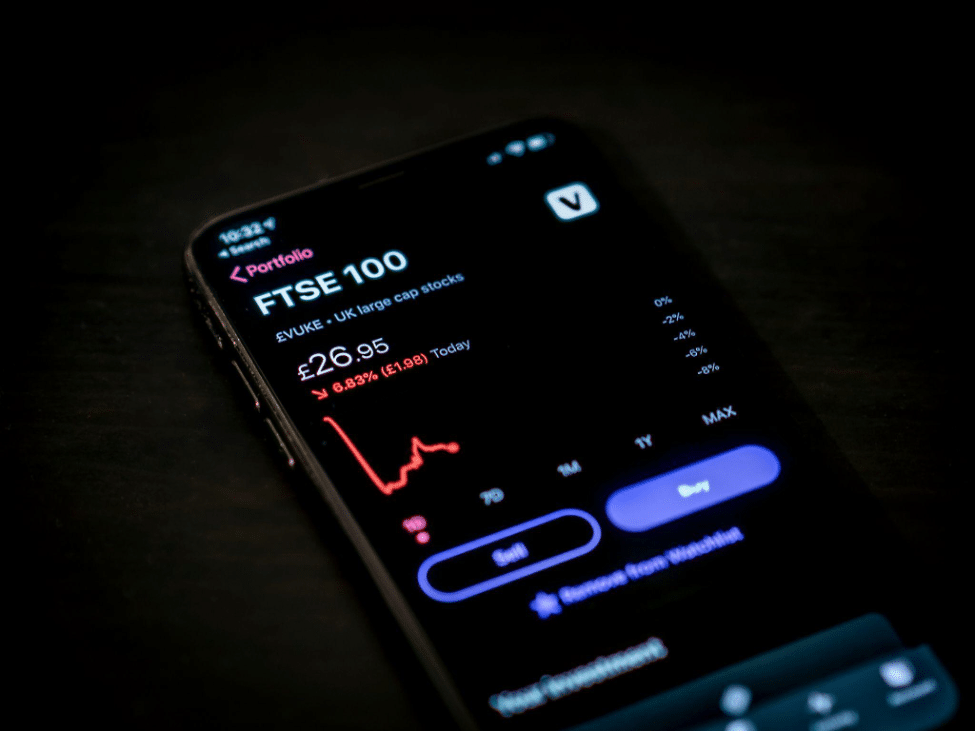Anyone who delves deeper into stock trading and index trading will encounter the term “benchmark index.” Benchmark indices help investors and fund managers navigate the complexities of the market. They serve as crucial reference points that provide numerous insights into market trends, dynamics, and performance.
Benchmark indices are also known as stock indices or market indices. While regular trading indices are structured to represent the performance of an industry, region, or market segment, a benchmark index goes further—it is a portfolio of securities that indicates how well someone’s investments are doing against an acknowledged standard.
You cannot evaluate performance in a vacuum. Hence, an investment product must be at par or exceed the performance of its corresponding benchmark to be considered worthwhile. In other words, these indices are used by investors to determine whether their investments are doing well relative to the market.
Moreover, they can be used to assess an investment manager’s performance and check whether they are worth the fees they collect from investors.
Understanding Comparisons: What affects index performance?
To understand benchmark indices and make better comparisons, you need to understand what influences the performance of trading indices in the first place. An index is a compilation of investment securities with similar attributes. Thus, an index’s performance relies on its constituent securities’ performance.
Indices are not only defined by their constituent components but also by the parameters associated with those components. For example, you can compose a portfolio of the selected companies’ shares to create an index measuring the performance of the largest 50 IT companies in the US.
Afterward, you compute their real-time value. In this case, the top 50 companies’ shares are your components. The parameters created to achieve the objective are the number of shares for every company in the index plus a divisor term to scale the index value.
Structure, therefore, also affects performance. Equity indices or trading indices may be constructed on a total market cap basis—the market value of all the shares issued by a particular company, or a free-float market cap basis—based on the company shares available for trading in the market. Macroeconomic conditions like GDP growth and inflation also influence index performance.
Forms of Benchmark Indices
Benchmark indices are diverse. They come in different forms, each created to reflect investment strategies and market segments.
Sector indices
Sector indices are built around sectors of the economy or specific industries. They can be classified under energy, healthcare, or technology. Sector indices offer targeted exposure to their designated sectors. Investors can evaluate opportunities or trends specific to each industry chosen through these indices. Widely-known examples under this category include the S&P Biotechnology Select Industry Index for biotech stocks and the NASDAQ Composite Index for tech stocks.
Regional indices
Regional indices track market performance in specific countries or geographic regions. They allow investors to gain exposure to regional markets. In addition, they are a diversification tool for portfolios—a means to spread risk and opportunity across various regions and economies. Examples of this index are the Hang Seng Index in Hong Kong and the DAX Index in Germany.
Strategy indices
Strategy indices are designed to implement specific investment methodologies to achieve custom objectives. They are designed based on quant models coupled with investment strategies to provide a single value for the aggregate performance of a selected group of companies.
Custom objectives include value investing, momentum trading, or dividend yield. The idea behind such indices is to outperform traditional market cap-weighted indices. They achieve this objective by focusing on factors that drive long-term returns and performance.
Broad-based indices
Broad-based indices or broad market indices track large-cap stocks’ performance across diverse industries and sectors. They give investors a more comprehensive view of overall market conditions. The S&P 500 and DJIA in the United States, the Nikkei 225 in Japan, and the FTSE 100 in the UK are all examples of broad-based indices.
Why Benchmark Indices Play a Pivotal Role in Stock Trading
Benchmark indices were designed and selected for critical reasons. They are compasses in the chaotic world of stocks and index trading. They serve as guideposts for investors, helping them evaluate their portfolios and adjust their allocations accordingly as they go along.
Risk management
Risk management is a crucial reason for using benchmark indices. Investors can use their chosen benchmark index to hedge against market risk and preserve their capital. They can identify potential risks and implement risk mitigation measures by comparing the drawdowns and portfolio volatility to relevant indices.
Portfolio construction
Benchmark indices can aid in asset allocation choices and portfolio construction. They provide investors with critical insights into market dynamics. Investors can use relevant indices to assess whether their portfolios have the optimal mix of geographic regions, sectors, and asset classes.
Portfolio alignment with relevant indices helps investors capitalize on market opportunities. Moreover, they can tailor their portfolios better to accomplish their investment goals.
Indicators of market sentiment
Benchmark indices provide insight into investor confidence and market sentiment. The index-level and movement shifts can indicate changes in economic conditions, market sentiment, and investor expectations.
Investors use indices as leading indicators to anticipate future economic movements and adjust their investment strategies accordingly. Businesses use them as advance predictors that help them make decisions regarding revenue and markets.
Development of investment strategies
Investors use benchmark indices to formulate their strategic asset allocation decisions. They analyze historical performance data and market trends of relevant indices to spot investment opportunities.
They can adjust their strategies to optimize returns and minimize risk by incorporating the insights they glean from the indices.
Performance evaluation
Benchmark indices are used as reference points to evaluate the effectiveness of a given investment strategy or decision relative to the broader market. By using relevant indices as a point of comparison for a portfolio, investors can gauge performance and identify weaknesses to refine and improve their strategies.
Top US and Global Benchmark Indices
Investors look to broad indices as benchmarks to gauge market and professional performance. They often use several indexes as a reference—a single index is not enough to measure the effectiveness of an investment strategy and the soundness of a diversified portfolio.
The S&P 500
The S&P 500 is hard to miss; it is regarded as the most popular benchmark in the world—often called “the benchmark of benchmarks” in the US. It tracks the performance of the top 500 large-cap US stocks and represents approximately 80 percent of the total US stock market cap. The index is a leading indicator of the performance of the US equity market.
The S&P 500 Index is either market-weighted or capitalization-weighted. The index’s constituent committee considers other factors such as public float, financial viability, sector classification, liquidity, and trading history.
The Dow Jones Industrial Average
The Dow Jones Industrial Average—the DJIA or “The Dow” is one of the world’s most established and extensively referenced benchmark indices, comprising stocks from 30 of the largest and most influential US companies across sectors like technology, consumer goods, healthcare, and industrials. Renowned for listing top blue-chip companies in the US markets, these firms provide steady dividends.
The Dow is a price-weighted index, calculated by adding up the per-share price of each company’s stock and then dividing the total by the number of companies in the index.
However, events such as spin-offs and stock splits have led to changes in the divisor. It currently represents about 25 percent of the total value of the US market. It is considered to be a leading indicator of US economic health. While it is not a snapshot of the broad market, it reflects the blue-chip dividend-value market and is monitored closely by policymakers, economists, and investors.
As of September 2022, the largest weighting in the Dow has been healthcare stocks at 21 percent of assets, followed by tech stocks at 20 percent.
The Nasdaq Composite Index
The Nasdaq is often recognized as the exchange that trades tech stocks. The Nasdaq Composite Index (Nasdaq) tracks the performance of all the company stocks listed on the Nasdaq exchange—it is a market cap-weighted index of all those stocks.
The stock portfolio comprises companies from international markets, spanning various sub-sectors within the technology industry like software, semiconductors, biotech, healthcare, and consumer discretionary sectors.
The Nasdaq is widely regarded as a barometer of the technology sector’s performance. It is, therefore, followed by investors, traders, and analysts who have a stake in the sector and need a benchmark to understand technology trends and market sentiment.
While the Nasdaq carries a majority of tech stocks, with technology making up almost half of its weightage, it also includes securities from the industrial, transportation, financial, and insurance sectors. It also includes both small and large firms. In addition, the index holds many speculative small-cap companies. Hence, apart from tech industry performance, it reflects sentiment toward speculative stocks.
The FTSE 100 Index
The FTSE 100 is a UK benchmark index that tracks and represents the performance of the 100 biggest companies by market cap as listed on the London Stock Exchange. The index represents approximately 80 percent of the UK stock market’s capitalization. It is regarded as a barometer of the performance of the UK equity market.

The DAX Index
Regarded as Germany’s benchmark index, the DAX index tracks the performance of the stock of the country’s 30 most liquid and most prominent companies as listed on the Frankfurt Stock Exchange. The DAX represents approximately 80 percent of the German stock market’s market capitalization.
The Bovespa Index
Brazil’s widely known benchmark index tracks the performance of the São Paulo Stock Exchange’s 100 most liquid and largest stocks.
The Hang Seng Index
The Hang Seng is a barometer of Hong Kong’s equity market performance. It tracks the stock of the 50 largest and most liquid companies listed on the HKSE or Hong Kong Stock Exchange.
The Nikkei 225
The Nikkei 225 tracks the performance of 225 large-cap Japanese stocks listed on the Tokyo Stock Exchange. This benchmark is understood to be a barometer of Japan’s equity market performance. Analysts and investors track it for insight into market sentiment in Japan.
How To Leverage Benchmark Indices to Your Advantage
If you want to weigh up your portfolio’s true success and investment skills, benchmark indices provide you with credible criteria. They can be used in various ways to assess your investing acumen.
Indices provide a solid point of comparison. For example, a bond portfolio with a 5 percent annual return may appear satisfactory. However, if your portfolio’s chosen benchmark generates a 6 percent return within the same period, you need to review your strategy, as it means you fell short of your target.
As for broad indexes, investors use them as benchmarks to gauge their personal performance apart from market performance. The S&P 500, the Nasdaq 100, and the DJIA inform them of “where the market is” at any given moment. Most investors hope to match or exceed these indexes’ returns.
To effectively leverage benchmark indexes, it is crucial to correctly pick out the indices most relevant to your investment strategy. The reference can include any top benchmark indices and appropriate regional, sector, and broad market indices. Moreover, you must regularly monitor the chosen indices’ performance to stay abreast of movements, market dynamics, and changes in the indices’ composition.
In addition to tracking benchmarks, investors must also compare portfolio performance regularly. This enables quick and timely adjustments. Based on a qualified analysis, you can reallocate to other asset classes or sectors to reduce risk exposure or take advantage of trends that outperform the market. Given the right approach, a capable investor can use benchmark indices to optimize a portfolio, enhance returns, and guide investment decisions for long-term success.
